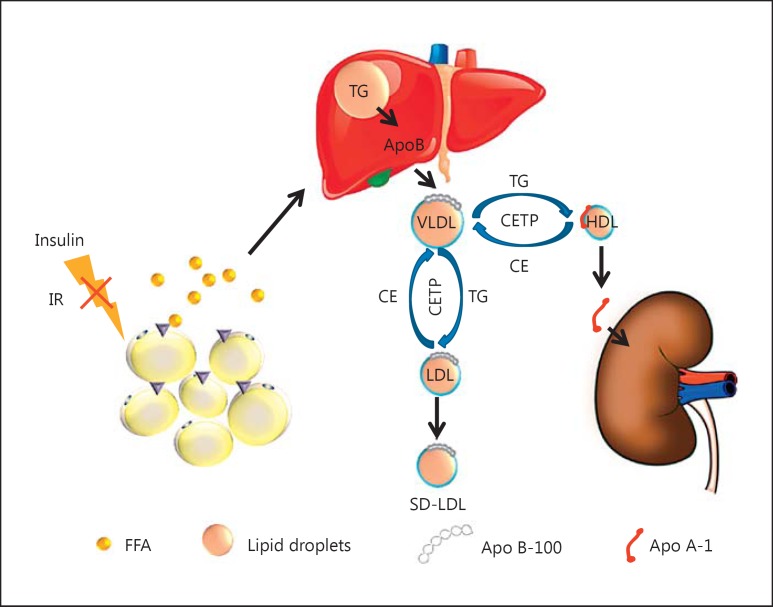Fig. 1.
Insulin resistance plays a central role in dyslipidemia. In adipose tissue, insulin inhibits the hormone-sensitive lipase. Thus, insulin has an antilipolytic action. Insulin resistance (IR) increases lipolysis, enhancing free fatty acid (FFA) release from the adipose tissue to the circulation, which increases very-low-density lipoprotein (VLDL) production in the liver. In the presence of increased VLDL in the plasma in diabetic kidney disease patients, VLDL triglycerides (TG) can be exchanged for high-density lipoprotein (HDL) cholesterol and low-density lipoprotein (LDL) cholesterol under action by cholesteryl ester (CE) transfer protein (CETP), resulting in TG-rich, cholesterol-depleted HDL and LDL particles. The TG-rich HDL can undergo further hydrolysis, which leads to the dissociation and clearance of Apo A-1. The TG-rich LDL can be converted to small dense LDL (SD-LDL) after hydrolysis.

